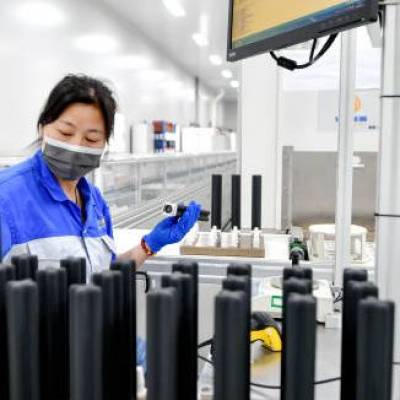

Researchers at Beijing University of Technology told the media that they had synthesised phosphorus and tin-based composites for high-capacity and high-stability anode material for sodium-ion batteries, having capacity retention of 97.7% after 50 cycles.
According to the researchers, sodium-ion batteries would replace lithium-ion batteries due to their high abundance and low-cost sodium. Phosphorus is a high-capacity anode material with high theoretical capacities, low discharge voltages, and low costs. However, they suffer from large volume expansion, including problems like structural collapse, particle pulverisation and declining performance rapidly. Phosphorus alloyed with tin is used to reduce such issues. Researchers used an optimal structure comprising crystalline nanodomains like tin phosphide and tin in an amorphous phosphorus matrix. It has helped in improving the conductivity of amorphous phosphorus and enhancing the efficiency of electrochemical reactions. Phosphorus, with its small crystalline domain and amorphous nature, makes it highly stable. Researchers faced issues in getting the structure information of microstructures due to disordered composite anode materials. They used a new methodology to get local structure information for compiled systems and quantify the components to even out the disordered materials. It helped to analyse the structure and proportion of the crystalline domains. Last year, in August, the Sandia National Laboratories designed new molten sodium batteries for grid-scale energy storage capacity. It could operate in temperatures as low as 230 degrees Fahrenheit against the commercially available molten sodium batteries, which can operate between 520-660 degrees Fahrenheit. Previously, the Washington State University and Pacific Northwest National Laboratory told the media that they had made sodium-ion batteries using cheap and widely available materials. These batteries work similarly to lithium-ion batteries and could retain 80% of their charge even after 1,000 cycles. Image Source